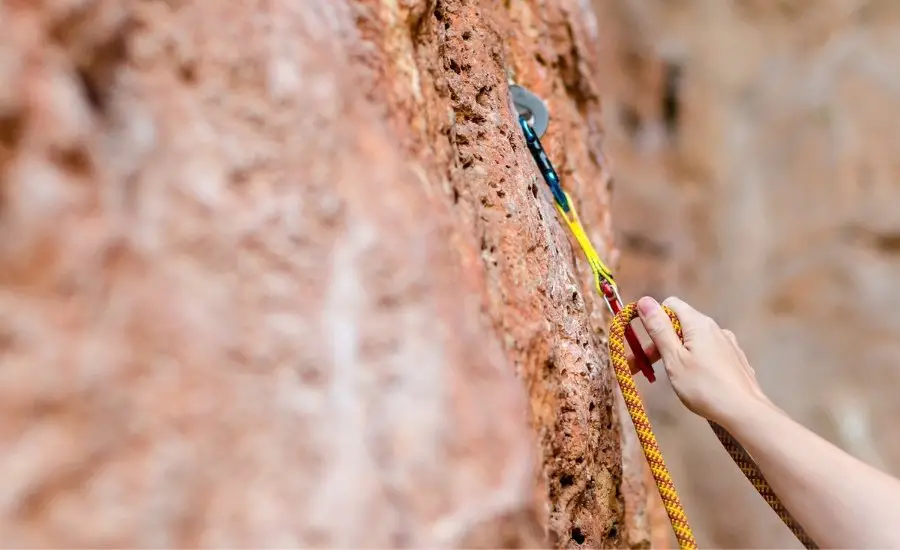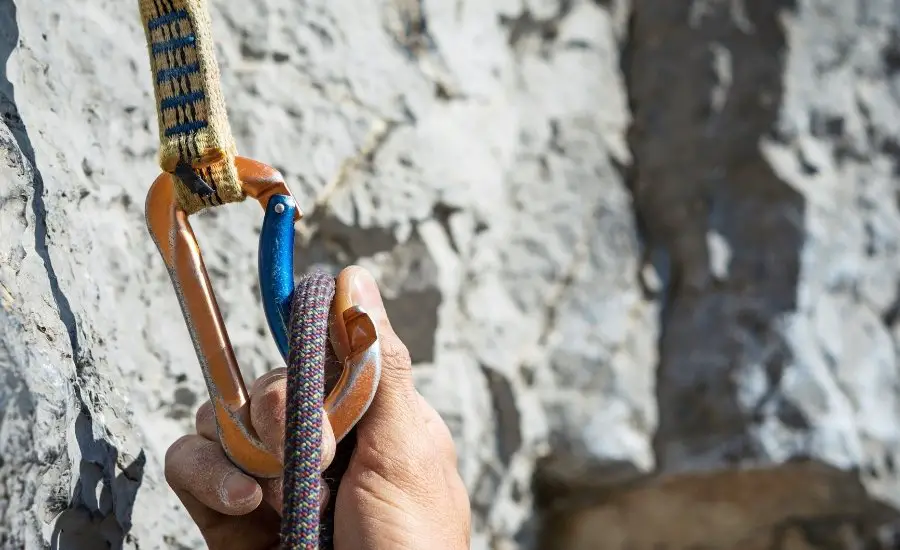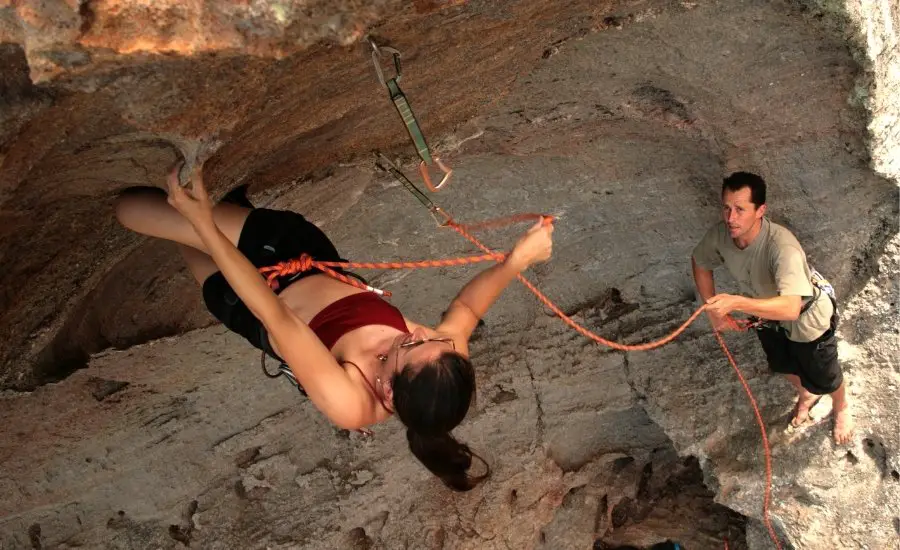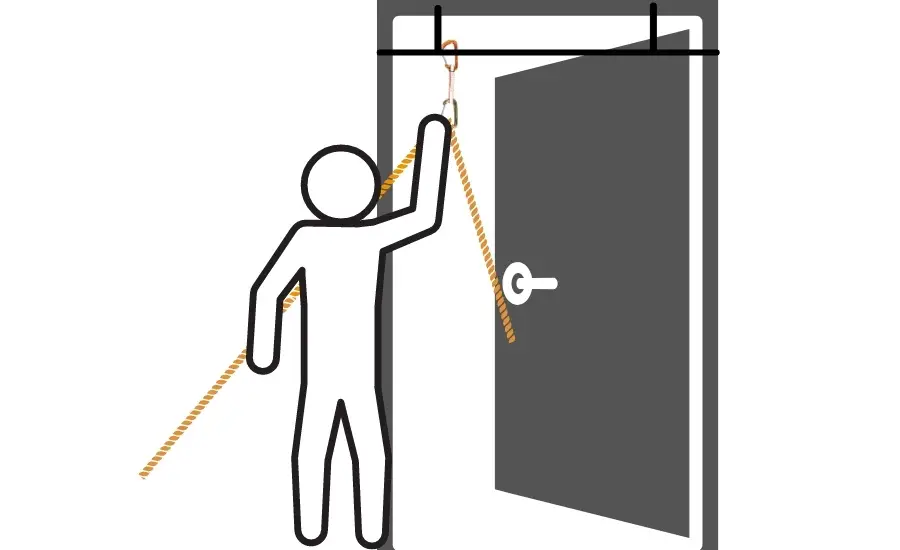Clipping quickdraws can be difficult to get used to at first and even harder to get good at. Like with everything else, practicing clipping will allow you to get better at it over time. However, there are certain things you can do to make sure you are making the most of your practice.
As a general rule, the best way to practice and improve your clipping ability is to simulate a wide variety of different clipping scenarios and repeatedly clip into them. Hanging a quickdraw at home will allow you to vary your clipping hand, relative draw height, gate position, and rope weight.
While clipping draws at the gym will allow you to get some practice in, you will be leaving a lot of potential progress on the table if you don’t do it at home as well. I discuss how to get the most out of your clipping practice and give you 3 unique ideas of how to practice at home.
If you are curious how much the popular quickdraws sets are going for these days, check out their current price on Amazon here!
Best Way To Practice Clipping Quickdraws

My karate instructor growing up always used to say “Practice does not make perfect. Perfect practice makes perfect.” Basically he is saying is it doesn’t matter if you practice a kick 10,000 times if you do it wrong every time. This same principle that applies to karate kicks also applies to clipping and everything else you do in life for that matter.
So, if you practice clipping only using one hand, into a draw in the same position, at the same height, while using the same length of rope, you will only be good at that one scenario. While it is not “wrong” per se, it does not allow you to be good at actually clipping while on the wall. You will run into clipping scenarios you have never done before.
“Perfect practice” for clipping is to make sure you are practicing proper clipping techniques for every scenario that you will run into while climbing.
The best way to improve your clipping ability is to frequently practice correct clipping techniques for different scenarios. Practicing for different scenarios allows you to simulate the different situations you will experience while climbing.
rockclimbingguru.com
I have found the best way to simulate these different scenarios is to hang draws at home. This way, you can easily vary the four main variables that will dictate how you clip while climbing:
- Relative draw height
- Clipping hand
- Gate position
- Rope weight
Each of these four variables is discussed in greater detail below.

Relative Draw Height
You will not be clipping into draws the same distance away from you every time while climbing. Sometimes you will be reaching way above your head and other times the clip may be at chest height. You will have to get used to clipping in both positions.
While clipping is easier when the draw is at a comfortable height, the difficulty is greatly increased when you are forced to stretch out as far as possible to make the clip. While this is not ideal, some routes may require you to do so and you need to be ready for it.
Clipping Hand
Some routes will require you to be in a position where you only can get a certain hand free from the wall. If you practice only with your right hand then you will not be accustomed to clipping with your left when required to do so.
In an ideal world you could use the same hand every time and become a clipping master with just that one. However, this is not the case in the real world.

Gate Position
Whether the gate is facing away from you or towards you will decide how you clip into it. This will also vary based on what hand you are using. An inward facing gate for a right hand clip will require you to clip outwards with your left hand.
Depending on your body position at the time fo clipping, you may not be able to choose which way to clip into the gate. Therefore, you need to be able to clip into both inward and outward facing gates with either hand.
Rope Weight
Depending on where you are on the wall and the clip positioning below you, the weight of the rope you need to pull-up will change. I suggest attaching different weights to the rope to simulate this.
Getting used to pulling up heavier ropes will help you actually make the clip when you are on the wall.
Unique Ideas to Practice Clipping Quickdraws at Home
Now that you know the main variables that go into clipping, it is time to actually practice them. Below I list three different ideas to do this outside of the climbing gym.
1. Hang a Draw on a Pull-up Bar in a Door Frame

This is the easiest and most efficient method of the three. It is a great way to get in a lot of practice as it will constantly remind you to clip every time you see the doorway.
I suggest clipping into the draw a couple times every single time you pass through the doorway. Might as well get some pull-ups in while you’re at it. You can also tie the climbing rope onto different weights to vary the amount of rope weight you clip.
Varying the draw’s relative height becomes a little difficult but is not impossible. You can either get on your knees or set up a chair nearby the doorway to make it a higher clip.
2. Bolt a Wood Plank and Hang a Draw On it
This is my favorite method of the three although it requires an extra step. This method allows you to practice both clipping the draw to the bolt and the rope into the draw. It also provides you with the greatest amount of variability.
You can set the wood plank literally anywhere and vary every aspect. Some of my favorite places to set the plank are above door frames, on high tables, and on top of shelves.
Like with the pull-up bar method, you can tie the rope to different weights to vary the weight of the rope.
3. Hang a Draw On Your Review Mirror (DON’T PRACTICE WHILE DRIVING)

DO NOT PRACTICE CLIPPING WHEN YOU ARE DRIVING! This method is only intended for you to do when you are STOPPED AND NOT DRIVING.
While you are waiting in your car, you can make the most of your time by hanging a quickdraw on your rearview mirror. Instead of clipping with 60m of rope, I suggest keeping a smaller rope fragment (approximately 6 to 10 feet) in your car.
This smaller rope can be a piece of old rope that is no longer safe to climb with or a rope of similar diameter that isn’t climbing rope.
This method will be good to get practice in clipping with the gate positioned towards and away from you. However, it will not allow you to change the rope weight or relative height.
